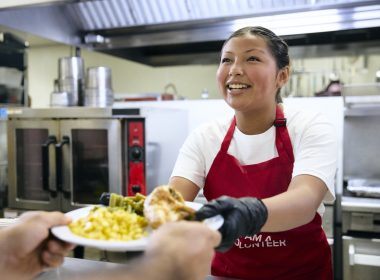Diane and I have six children, four girls and two boys. They are all different and terrific human beings. They reveal beautiful care and concern for the “other” regardless of who that person might be. All work in helping professions, two teaching in public schools, and two at the university level. One works at Western Territorial Headquarters, and one has the most difficult job, primarily caring for two aged parents while helping raise two of her own grandchildren. Each has built terrific families. All six have given us grandchildren, and we even have two great grandsons.
Neither Diane nor I have pushed or pulled any of our children in any direction. Instead, we have tried to model a strong household of love—visible love—loaded with hugs and kisses. This was never planned. Our marriage of 63 years of true love seemed to model our great joy: our children. They are all independent decision makers and rarely seek any assistance at all. When they do, it’s usually giving their now adult children an option. It’s necessary to reveal, both verbally and non-verbally, the dimensions of your love for the children regardless of age. Have friendly conversations. Help them discover you. Don’t raise a lot of questions. Be aware of all the stages of human development. Listen more than talk. Don’t try to teach good behavior. Instead, model the kind of behavior you seek for them. Have fun at home. Celebrate events. Don’t force attention to your own stories. Laugh a lot. Build traditions. Model positive expectations. Be inclusive.
One critical step in a marriage recognizes certain key essentials. The marriage must build a positive, fundamental structure. Michael Nichols points out that a marriage requires an adjustment from self to couple decision making. This requires mutual accommodation in managing everyday activities. The two need to agree on major issues—where to live, when to have children, how the budget works. They also need to coordinate the distribution of home driven responsibilities—who does what.
The couple takes a significant step when a child joins them. Boundaries change. The way of life in the home shifts. The mother’s life changes more than the father’s. She sacrifices more and needs more support; where this support comes from and how it is managed is a delicate issue. Every family will go through periods of stress. It could involve financial problems, cheating, or overly rigid or oppositional behavior by children. In response, push positivism. Be understanding. Don’t take any matters personal. Avoid rigidity. Promote change in your own process of understanding and try to understand the needs of others. Explore your process of communication in relation to the problem by including them. Don’t become enmeshed (a feeling of powerlessness).
When things go wrong, get help.
Another factor in the marriage of Diane and Bob is our attendance in church. At The Salvation Army corps we sit together, and enjoy the music and short practical message from the Captain. We grow together, Diane and I. We receive practical knowledge about the process of living and loving. We confront issues in our minds and explore them later. We have fellowship with friends of a lifetime. There is a sense of security there that welds us together. We’ve built a family. We are family.
How are you building yours?

Listen to this article
You May Also Like
Robert James Stillwell | May 15, 1928 – Nov. 30, 2020
Lifelong Salvationist Dr
2 minute read
January 7, 2021










